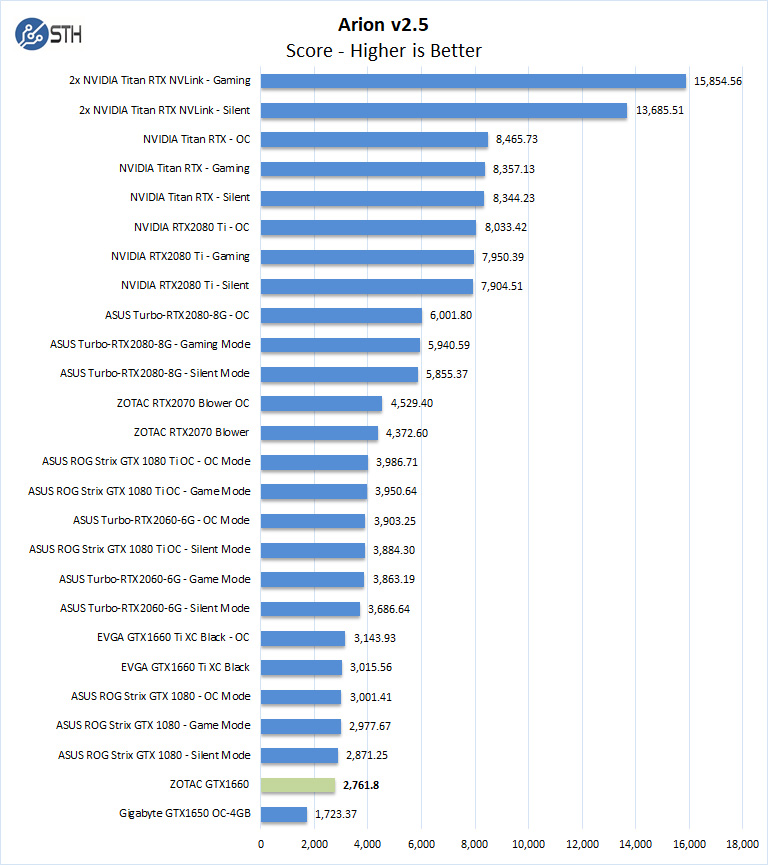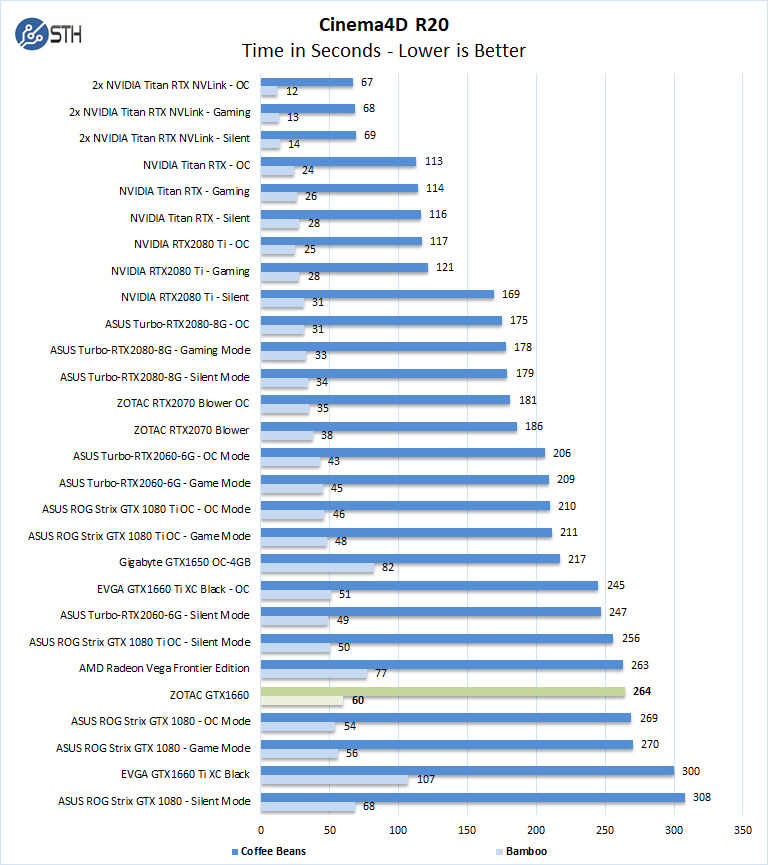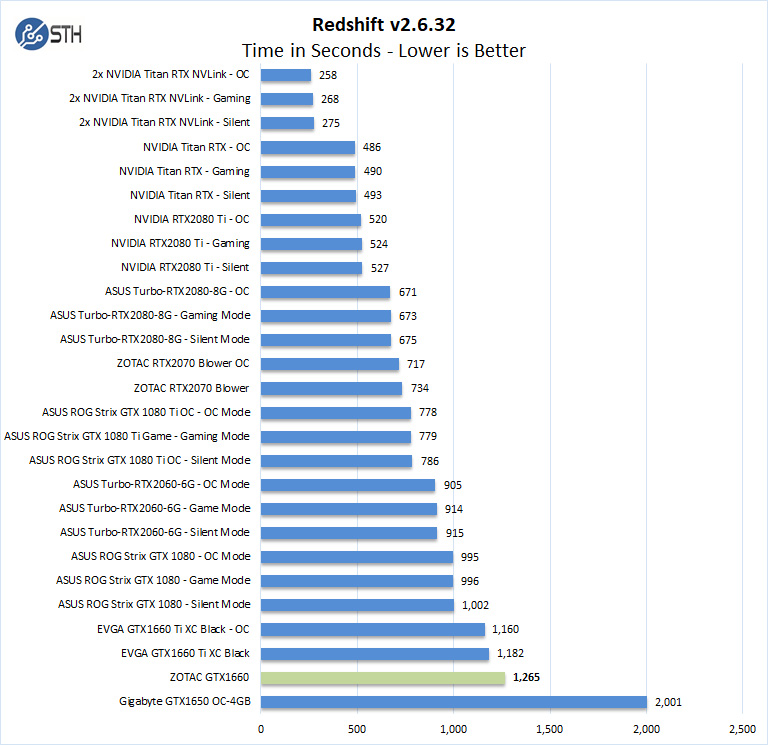Zotac GeForce GTX 1660 Rendering Related Benchmarks
Next, we wanted to get a sense of the rendering performance of the Zotac GeForce GTX 1660. Creative professionals often use GPUs for rendering offload, and there are customers in various geographies and income levels who may look to the Zotac GeForce GTX 1660 as the best option they can get their hands on.
Arion v2.5
Arion Benchmark is a standalone render benchmark based on the commercially available Arion render software from RandomControl. The benchmark is GPU-accelerated using NVIDIA CUDA. However, it’s unique in that it can run on both NVIDIA GPUs and CPUs.
Download the Arion Benchmark from here. First-time users will have to register to download the benchmark.

Here we wanted to point out a very intriguing result. The performance of the Zotac GeForce GTX 1660 is considerably faster than the GTX 1650 and fairly close to the GTX 1660 Ti. This jump shows a fairly clear case for moving up the stack here.
MAXON Cinema4D 3D
ProRender is an OpenCL based GPU renderer which is available in MAXON’s Cinema4D 3D animation software. A fully functional 42-day trial version is available for downloaded from the MAXON website here. Note: Even after expiration, the trial can still be used to measure render times.

We were slightly surprised to see the Zotac GeForce GTX 1660 perform close to the AMD Radeon Vega Frontier edition here as those tend to play in different segments.
Redshift v2.6.32
Redshift is GPU-accelerated renderer with production-quality. A Demo version of this benchmark can be found here.

This chart follows our general trend.
We wanted to note that the Zotac GTX 1660 could not run our Octane render benchmark as 6GB of onboard memory was simply not enough to start the benchmark.
Next, we will have 3DMark results before moving onto power consumption, thermals, and our final thoughts.




Some of these pictures seem to be from a Gigabyte 1650 and not this GPU?
95% of the content on this site is solid, but many of these “reviews” leave me scratching my head. Did no one look at these benchmark charts and realize that comparing a budget card to 15 high end cards and a couple of Kepler cards was incredibly unhelpful? This card is at the bottom of every benchmark! Why not compare it to cards in its range, I.E. 1060 and 1070? I mean this is the type of stuff you learn about in an intro stats class.